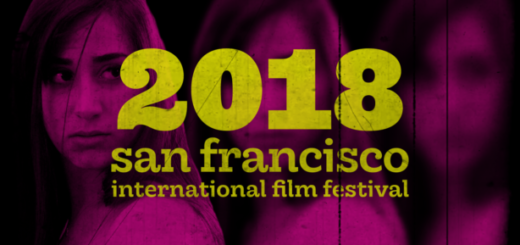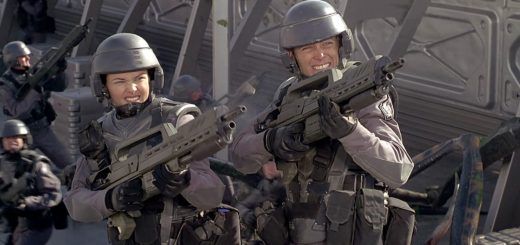PTA: Simple and Perfect and Lovely
There are few American directors-of Generation X-with whom the late Millennials will credit as their filmmaking galvanizers: Wes Anderson, Darren Aronofsky, Joel and Ethan Coen, David Fincher, Spike Jonze, Christopher Nolan, Alexander Payne, Quentin Tarantino, Edgar Wright, and, of course, Paul Thomas Anderson (herein abbreviated PTA). The year 2017 becomes quite magical when one considers the following: this year marks the 10th anniversary of PTA’s THERE WILL BE BLOOD, the 20th anniversary of his second feature BOOGIE NIGHTS, and the release of his latest picture, which is set in the fashion world of 1950s London and stars Daniel Day Lewis as an ambitious dressmaker who’s commissioned to design bespoke clothing for a royal milieu. The faithful shall celebrate Jesus’s birth, while the secular shall celebrate Lewis’s role, or one shall do both-a jolly old Christmas, indeed. With two anniversaries for our American auteur, it’s rather fascinating to retrace his maturing from BOOGIE NIGHTS to THERE WILL BE BLOOD: 20 years later, the former feels gaudy and high-strung, and the latter, patently controlled-the touchstone for PTA’s shift in directorial style: quantum mutatus ab illo.
Just over a year before my disgorging from the womb, a work-directed by a skinny, pale wunderkind-premiered at the Toronto International Film Festival, garnering some stellar reviews. BOOGIE NIGHTS: a period piece set in Los Angeles’s San Fernando Valley during the ‘70s-the Golden Age of Porn-and the ‘80s-the Golden Age of Coke-based upon PTA’s mockumentary short film THE DIRK DIGGLER STORY, a work that transported audiences to a preterite epoch, one tantalizingly near yet so far out of reach. Mark Wahlberg stars as Eddie Adams, a high school dropout, who lives with his stepfather and hysterical, alcoholic mother in the good ol’ Valley. Eddie’s employed at the Reseda Nightclub, where he meets porno director Jack Horner (no better name for a man of his occupation), who offers the young buck refuge from the dysfunctional household. Before the days of adult entertainment websites like young sexer, this was a familiar story for many people entering the porn industry. And, yes, it turns out Eddie has a male principle fit for porn production; Eddie gives himself the screen name “Dirk Diggler” and rises rapidly to illustrious stardom thanks to his handsome looks, youthful charisma, and the anomaly dangling between his inner thighs. It’s a well-known fact that for a guy to be in the industry, they do need to have a substantial package! Nearly all of the guys on fuckvideos have followed in Mr. Diggler’s footsteps, showing off their massive manhood. However, the Valley’s seamy underbelly becomes exposed to the rise of cocaine and crack-amphetamines abundant, uh-oh. Eddie develops a nasty predilection for the blow, which begets addiction, which begets a rock-hard bottom.
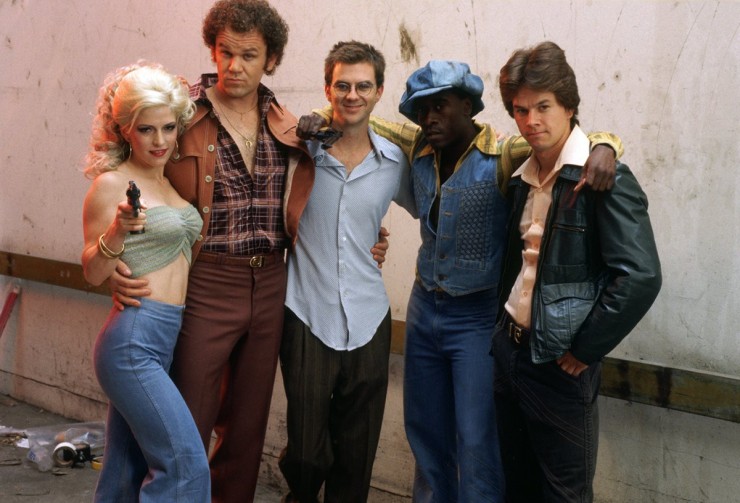
Marky Mark and the Funky Bunch!
PTA’s direction in BOOGIE NIGHTS lends itself to the excess of the era, although at times throughout the film, I wonder whether certain scenes would have played better if he had not branded each with such a zealous emblem. Long takes are featured extensively throughout the film, one of which captures the New Year’s Eve party wherein assistant director Little Bill Thompson discovers his porn star wife (the kind of lady you’d see on nu-bay.com these days) having sex-once again-with a young stud; he subsequently grabs his handgun, shoots the two fornicators, and blows his brains out-just prior to the year 1980. The first half of this scene did not need to be captured with a oner; sure, one might argue that such a shot aids in building tension, but in this particular scene, the tension only begins to escalate after Little Bill’s discovering his wife having sex and his walking back to the car to get his handgun: the first half could have been covered conventionally, while the latter could have been captured with an effective one-take.
Earlier in the film, during the pool party scene-Eddie’s first exposure to the inside world of porn, and his exposing of his wang-doodle to an approving producer, the Colonel-PTA begins with a Scorsese Dolly-in on the Colonel as he exits his car. Immediately following this shot are quick, and grotesquely indulgent, jump-cuts of the Colonel grunting and stretching: despite his age PTA had some balls, and seemed the kind you’d find more about on the more illicit websites these days . . . Another long-take follows this introduction, making pit-stops at various locations around the pool to witness trivial conversation, culminating with the camera itself entering the water, tracking a random chick as she swims. Gaudy. Gaudy. Gaudy. Sure, one-takes are effective: in tactful, restrained doses, however. PTA, like Eddie with the blow, developed a nasty predilection for gaudy, gratuitous one-takes, so much so that his (PTA’s) addiction rendered BOOGIE NIGHTS overwrought.
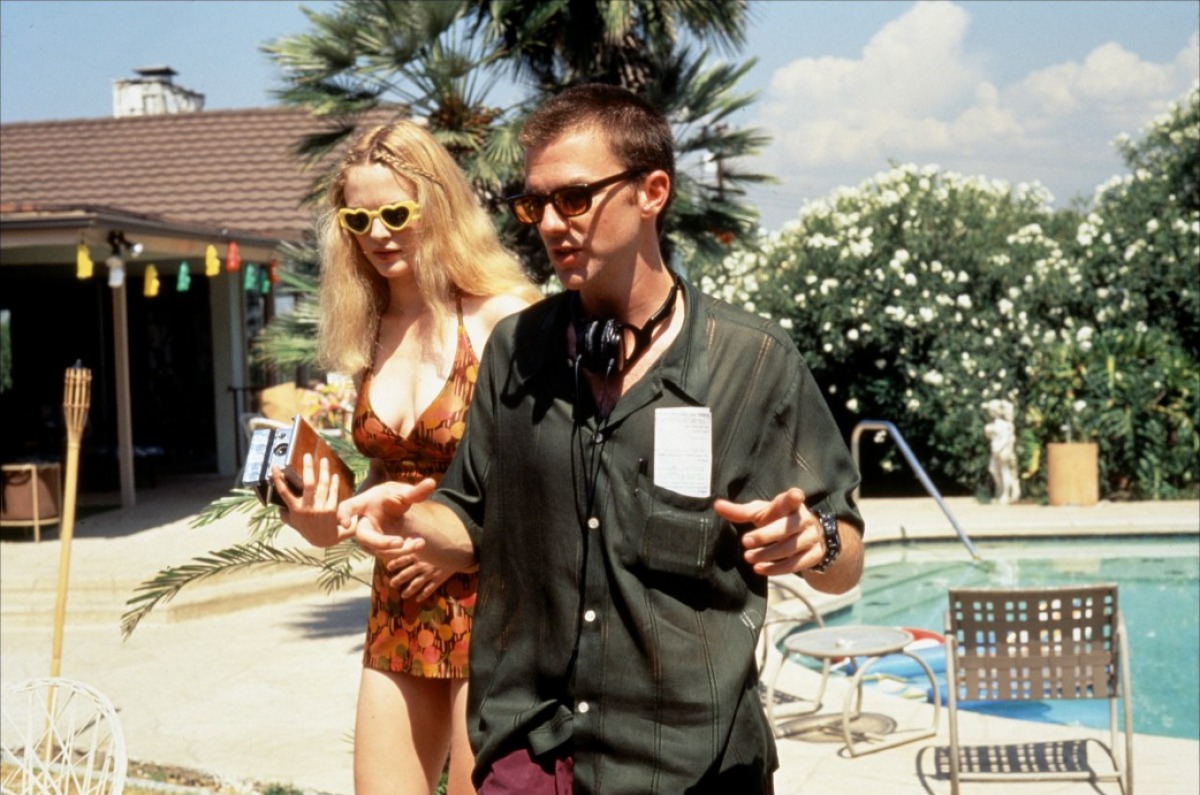
“All I ever wanted was a ‘78 ‘vette and a house in the country” – Dirk Diggler
Unfortunately, I just took a stab at perhaps my favorite director of Generation X: I’m a bit lugubrious. But now I shall shrive myself and praise his pants off. THERE WILL BE BLOOD stars the illustrious Daniel Day Lewis as Daniel Plainview, a silver prospector turned oilman, a humble layman turned tyrannical baron. PTA derives the central conflict of the film from Plainview’s relationship with Eli Sunday (Paul Dano), a pastor claiming to possess direct connection with the Holy Spirit, and who promises the people of Little Boston-a rural town in California-religious salvation; on the other hand, Plainview, seeking to turn Little Boston into his Garden of Oil, promises salvation by way of jobs, agriculture, and profit. Throw into the soup Plainview’s deaf son, H.W., an orphan whom he rescued, and a soft-spoken, eerie man, Henry (Kevin J. O’Connor), claiming to be Plainview’s half-brother, and you got a delicious and boiling film-total scintillation. Oil. Greed. Betrayal. And . . . Blood.
Despite there being one-takes throughout THERE WILL BE BLOOD, they, by no stretch of the imagination, hearken the one-takes featured in BOOGIE NIGHTS, which I had mentioned-excessive, serving no point but to please, shock, and awe: Scorsese-esque. During the sequence in 1911 wherein Paul Sunday (also played by Paul Dano) visits Daniel to inform him of the oil deposit beneath the Sunday family ranch, PTA captures the dialogue without a single cut. Lacking movement or the cut-medium, close-up-the actors’ blocking conveys the dynamics of the scene: this is classical film composition-formal and restrained. Another one-take occurs the day after the death of a rig-worker; Daniel, inclined due to the employee’s recent passing, must attend a service at the Church of the Third Revelation, where his nemesis Eli preaches. The two-minute-and-30-second sequence is captured with a one-take; the camera tracks Daniel as he enters the church, and, rather than cutting to Daniel’s reaction of the sermon unfolding before him, the camera continues to push in on Eli, capturing his stupendous, albeit obnoxious, performance. There is no ramping, rapid dollies, retrograde zooms-just a “simple and perfect and lovely” push in on Eli treating an elderly’s arthritis, and a slow reverse dolly as he “casts out” the wicked demon that had been residing in the woman’s hands.
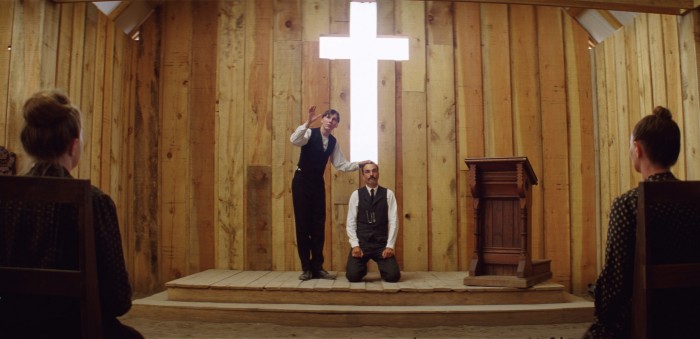
There Will Be Cum: a new porno picture from PTA! Daniel Plowyou and Eli Cumday fight for dominance! Shoot me now.
I’ve been thinking about PTA’s latter work, viz. THERE WILL BE BLOOD, THE MASTER and INHERENT VICE. The formal and restrained style evident in these films reminds me of Edward Hopper’s oil paintings-his famous “Nighthawks,” “Office at Night,” “Rooms By The Sea,” and “Room in New York,” to name just a few. The paintings-and films-are tightly composed, seemingly direct translations of vision; yet, they are also expansive in subject matter: how many intertwined stories do you think of when you look at “Nighthawks” or “Room in New York,” or when you watch the Navy veterans return home in THE MASTER, or Doc and Denis explore the Topanga Canyon mansion in INHERENT VICE? These paintings and films are tempered. But if you look closer, they are quite scintillating, fraught with tension. As PTA matured, he underwent simultaneously a meticulous artistic process, a process marking his shift from the literal to the lyrical with each new project. He approaches, closer and closer and closer, the poetics of countless auteurs who’ve matured before him. Dare I say INHERENT VICE becomes his latest testament, his latest pediatric physical . . . What has he in store for 2017? The apogee of his maturation to auteur-hood?

